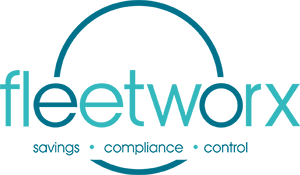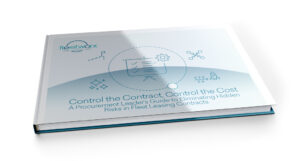07 Oct The Management Fee: Why Procurement’s Favourite Benchmark is Just the Tip of the Iceberg
When reviewing fleet leasing contracts, procurement teams often find themselves gravitating toward the management fee. It feels tangible, transparent, and controllable. A fixed cost per vehicle that can be benchmarked against the market and negotiated down during tender. For many procurement professionals, it’s the natural focal point of cost control.
But here’s the reality: the management fee represents just a fraction of the leasing provider’s total revenue. In most cases, it accounts for only 10–20% of what the supplier earns from your contract. By focusing too heavily on this visible number, procurement risks overlooking where the real value erosion occurs.
Why the Management Fee Misleads
The simplicity of the management fee is deceptive. It creates the impression that you’ve pinned down supplier costs, when in fact you’ve only scratched the surface.
- Easy to negotiate – It’s a fixed line item, so it becomes the obvious battleground during tenders.
- Visible to all – Unlike other cost levers, the fee is clearly stated in contracts and easy to benchmark.
- False sense of victory – Securing a low management fee can feel like a procurement win, but it ignores the bigger commercial picture.
Suppliers understand this dynamic. They are happy to make the management fee look competitive, knowing they can recover margin later through less-visible levers such as interest margin, network rebates, contract deviations, and inflated maintenance budgets.
The Risk for Procurement Leaders
When procurement teams measure success solely by management fee reductions, they create blind spots. While the visible number may look good, hidden revenue streams quietly drain value over the life of the contract. This leads to a dangerous illusion of control: believing costs are under control when, in reality, they are simply shifting elsewhere.
The longer the contract runs, the more pronounced this effect becomes. Initial savings celebrated on “tender day” often vanish within the first couple of years, replaced by creeping costs that are harder to track and harder to challenge.
What To Do Instead
To truly control costs, procurement must broaden its focus beyond the management fee and interrogate the supplier’s full revenue model.
- Treat the management fee as a starting point – Useful for comparison, but never the whole story.
- Interrogate revenue streams – Ask where else the supplier generates profit and how those streams are monitored.
- Maintain oversight beyond tender – Contracts must be actively managed throughout their lifecycle, not just at the point of award.
At Fleetworx, we refer to this as the “iceberg effect”. Procurement sees the 20% above the waterline, the visible management fee. But 80% of the commercial reality lies below the surface, hidden in the complex structures of the contract. Unless procurement leaders are prepared to dive deeper, they risk sailing straight into value erosion.
Our new ebook, Control the Contract, Control the Cost, explores all six commercial trapdoors in fleet leasing and provides practical steps to close them.
Don’t mistake visibility for control. Look beneath the surface to protect value.



Sorry, the comment form is closed at this time.